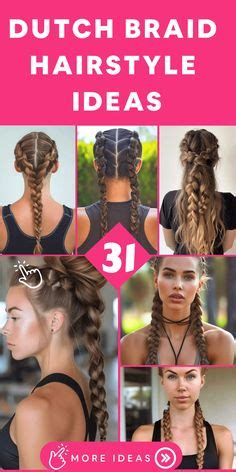From ancient civilizations to modern-day catwalks, human hair braids have captivated hearts and minds for centuries. As a versatile and expressive form of hair art, braids have transcended cultural boundaries and become a global phenomenon.

The History of Human Hair Braids
The origins of human hair braiding can be traced back to at least 3500 BCE, as evidenced by ancient Egyptian artifacts depicting intricate braided hairstyles. Throughout history, braids have held significant cultural and spiritual meanings in various societies. For example:
- In African cultures, braids were used to identify tribes, social status, and marital status.
- In Native American cultures, braids symbolized strength, courage, and wisdom.
- In Asian cultures, braids were believed to bring good luck and ward off evil spirits.
Types of Human Hair Braids
The world of human hair braiding is vast, with countless variations and styles to choose from. Some of the most popular types include:
- Classic Braids: Simple three-strand braids, French braids, and Dutch braids.
- Cornrows: Tightly woven braids that create a raised, three-dimensional effect.
- Box Braids: Square or rectangular sections of hair braided individually.
- Senegalese Twists: Two strands of hair twisted together to create a rope-like effect.
- Micro Braids: Very small, individual braids that can be worn for extended periods of time.
Why Human Hair Braids Matter
Beyond their aesthetic appeal, human hair braids offer numerous benefits:
- Protective: Braids create a barrier around the hair shafts, shielding them from damage caused by heat, chemicals, and friction.
- Growth-Promoting: Braids can encourage hair growth by preventing breakage and distributing natural oils throughout the scalp.
- Versatile: Braids can be effortlessly styled into a wide range of looks, from elegant buns to playful ponytails.
- Time-Saving: Braids can save time and effort on daily hair maintenance, especially for those with thick or curly hair.
How to Braid Human Hair
Braiding human hair may seem daunting at first, but with practice and the right techniques, it can become a rewarding skill. Follow these steps for a classic three-strand braid:
- Section the hair: Divide the hair into three equal sections.
- Cross the left strand over the middle strand: Bring the left strand over the middle strand and place it in the middle position.
- Cross the right strand over the new middle strand: Bring the right strand over the new middle strand (which was previously the left strand) and place it in the middle position.
- Repeat steps 2 and 3: Continue alternating the left and right strands over the middle strand until the braid is complete.
- Secure the braid: Tie the end of the braid with a hair elastic or ribbon.
Inspiring Applications of Human Hair Braids
The versatility of human hair braids extends far beyond traditional hairstyles. Here are a few innovative applications:
- Hair Extensions: Braids can be used to add length, volume, or color to natural hair.
- Headbands: Braided headbands can create a stylish and eye-catching accessory.
- Jewelry: Intricate braided designs can be formed into earrings, necklaces, and bracelets.
- Decorative Arts: Braids can be incorporated into tapestries, wall hangings, and other decorative items.
Tables for Reference
Table 1: Estimated Market Size of Human Hair Braids
| Year | Global Market Value |
|---|---|
| 2020 | US$12.5 billion |
| 2025 (Projected) | US$25 billion |
Table 2: Braiding Techniques by Hair Type
| Hair Type | Recommended Braiding Techniques |
|---|---|
| Straight | Classic braids, French braids, Dutch braids |
| Curly | Cornrows, box braids, micro braids |
| Kinky | Senegalese twists, rope braids, flat twists |
Table 3: Time Required for Different Braid Styles
| Braid Style | Estimated Time |
|---|---|
| Three-strand braid | 10-15 minutes |
| French braid | 15-30 minutes |
| Dutch braid | 20-45 minutes |
| Cornrows | 2-4 hours |
Table 4: Care Instructions for Braided Hair
| Task | Frequency |
|---|---|
| Wash | 2-3 times per week |
| Condition | Every wash |
| Deep Condition | Twice per month |
| Re-braid | Every 4-6 weeks |
Frequently Asked Questions
1. Are human hair braids damaging to hair?
No, when done properly, human hair braids are protective and can actually help hair to grow.
2. How long can I keep human hair braids in?
The length of time you can keep braids in depends on the type of braid and your hair type. Most braids can be worn for 4-8 weeks.
3. How do I remove human hair braids?
It is recommended to have your braids professionally removed by a hairstylist to avoid damage.
4. Can I braid my own hair?
With practice and patience, it is possible to braid your own hair. However, it may be easier to have your hair braided by a friend or family member.
5. How much do human hair braids cost?
The cost of human hair braids varies depending on the style, length, and location of the salon. On average, expect to pay between $100 and $500.
6. Can I swim with human hair braids in?
Yes, but it is important to wear a swim cap to protect your hair from chlorine and saltwater.
Conclusion
Human hair braids are a versatile and timeless fashion statement that transcends cultural boundaries. Their protective, growth-promoting, and time-saving benefits make them an excellent choice for anyone looking to embrace a unique and expressive hairstyle. With countless styles and techniques available, there is a braid out there for every personality and hair type. So, step into the world of hair braiding and let your creativity shine!
